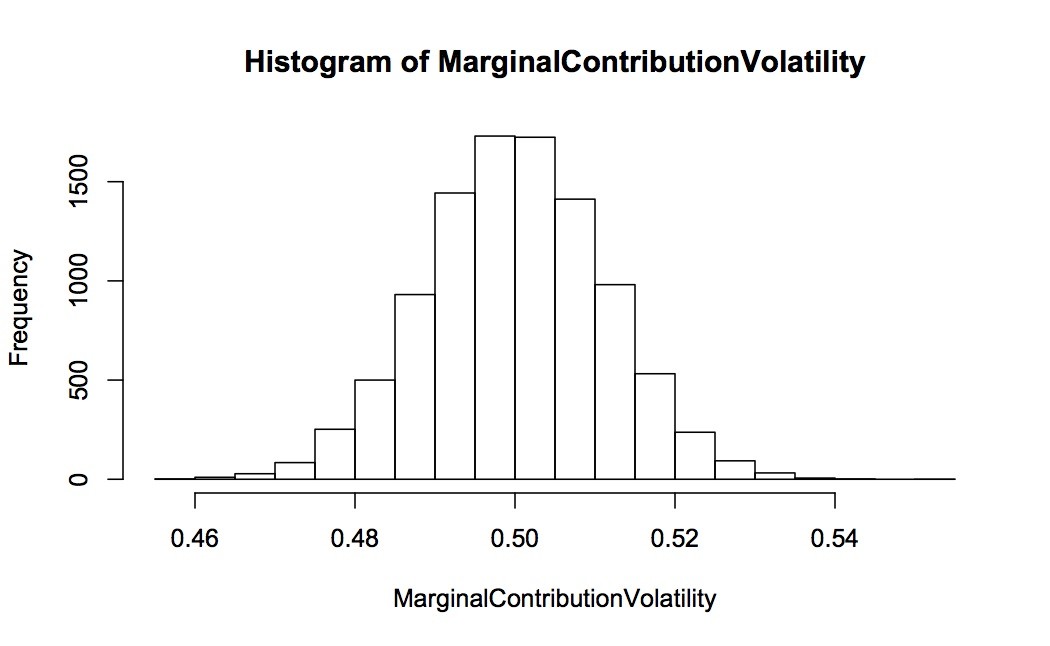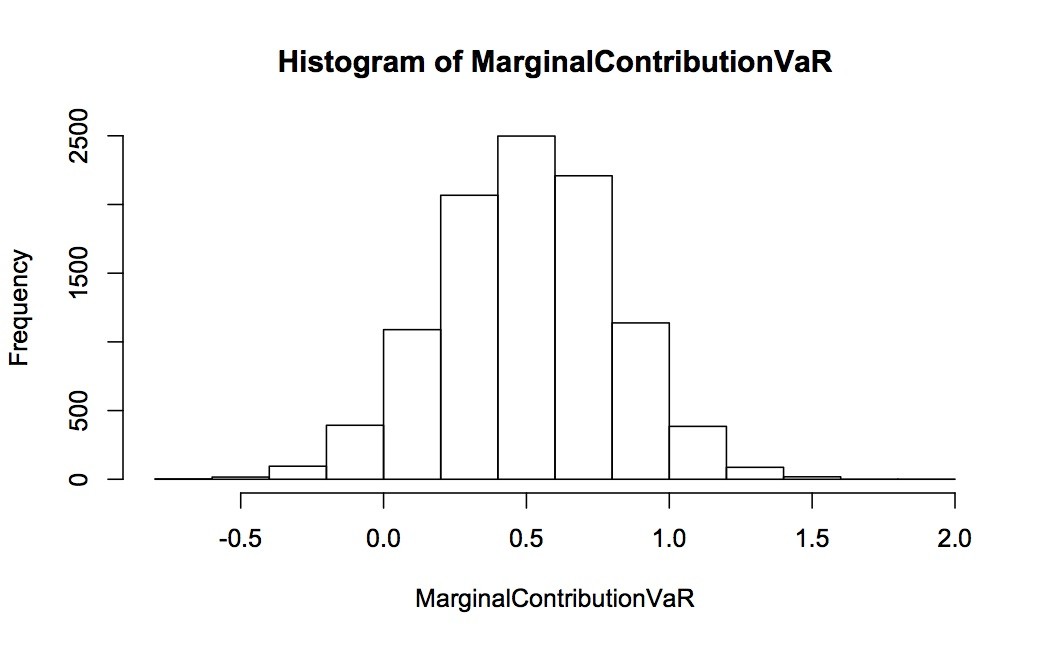Monte Carlo Simulation Approach To Value At Risk Finance Essay
Post on: 16 Март, 2015 No Comment

The value at risk (VaR) methodology is widely used in Risk Management in order to quantify the inherent portfolio risk that may arise as a result of a change in market drivers with a pre-determined confidence level. Different types of risk can be measured and quantified through the usage of the VaR and these include Market and Credit risk (Hull, 2003). Over the years, there were several methods that were developed to calculate VaR: the most common of these are the Historical Approach, the Delta-Gamma Approach and the Monte Carlo Simulation Approach.
According to literature, value at risk (VaR) measures and quantifies the maximum loss over a time horizon that can be incurred at a given statistical confidence level (Javanainen, 2004). For the purpose of this paper, a Monte Carlo Simulation approach will be used to measure the VaR of a non linear portfolio composed of European type currency options. The reported VaR will be the net VaR taking into account the price paid for the option. This will require the calculation of the option price. The price will be derived using the Black-Scholes-Merton pricing formula for pricing currency options [1 ] .
The structure of this paper will be as follows. In Section 1 we define what derivatives are and what some of the risks associated with them are. Section 2 breaks down the type of financial risk that can incur in a banking environment and provides the definition of each risk. In Section 3 we outline some of the financial disasters and the regulatory environment, also touching slightly on Basel capital requirements. Now that we know the environment that we are operating in, section 4 introduces and provides a higher level definition of VaR. In Section 5 we look at different VaR methods and state the disadvantages of the historical and the variance-covariance method. We then continue by making a case for Monte Carlo simulation approach. In Section 6 the option pricing methodology will be outlined and all theoretical assumptions will be made. On Section 7 we will outline in detail the process for followed for the development of the Monte Carlo simulation approach. Under this section we will look at the following topics in detail; Stochastic processes, determining the risk-free rate, estimation of volatilities and correlation, simulating correlated random variables and simulation. In Section 8 and Section 9 we will analyse the results and conclude the findings. Section 10 is the appendix for this paper. The data, Cholesky decomposition, solution to the stochastic deferential equation and the Excel VBA code will be outlined here.
1. What are Derivatives?
Warren Buffet, one of the most respected investor in the world, once referred to Derivatives as financial weapons of mass destruction. In his letter to the annual shareholders, he made the comments that “the rapidly growing trade in derivatives poses a mega-catastrophic risk for the economy” (2009). This was alluding to the fact that the financial markets were already faced with a crisis resulting from the sub-prime lending and the lack of understanding of credit derivatives and their implications. A derivative is defined as a contract between two or more parties deriving its value from the underlying asset (Jorion, 1997). The assets referenced by derivatives range from stocks (shares), indices, bonds, commodities, funds, baskets of underlying assets and currency. Some of the most common derivatives traded today are forward contracts and options. A forward contract on foreign currency gives the buyer the right to buy the underlying at an agreed future rate on a specified future date. The option on the other hand, gives the buyer the right but not the obligation to buy the underlying at the agreed price on a specified future date.
The growth in derivatives trading was fuelled by the ability of these instruments to separate ownership from market risk associated with the underlying (Jorion, 1997). For example, a forward contract on an equity underlying does not give the holder voting rights but exposes the holder to market risk. Some of the drivers are the increase in uncertainty in the financial markets, technological advances and political developments. Because of these, institutions will always be looking at a way to protect themselves against any potential losses. Without dwelling on the mechanics of derivatives, derivatives can provide a way to hedge this risk through a combination of various instruments.
2. Types of financial risks
There are many types of risks that financial institutions and corporates are faced with on a daily basis. Some of the most common risks are Market risk, Credit risk, Liquidity risk, Operational risk and Legal risk. This paper will focus mainly on measuring and reporting the market risk associated with derivatives.
Risk
Definition
Market
The risk arising from changes in the prices of financial assets and liabilities.
Credit
The risk arising when client is unable or unwilling to fulfil its obligations.
Liquidity
Cash flow funding liquidity risk: inability to meet cash flow obligations which may force early liquidation.
Market liquidity risk: inability to transact due to insufficient market activity.
Operational
The risk of losses resulting from management failure, faulty controls, fraud, human error or inadequate systems.
Legal
The risk that the counterparty in the transaction does not have the legal or regulatory approval to enter into the transaction.
Source (Jorion, 1997)
When J.P. Morgan was asked what the market was going to do, his answer was: “The stock market will fluctuate” (Ber09). These fluctuations may lead to profits or losses depending on the positions taken by the bank. Risk managers have a huge task in their hands of measuring, mitigating and managing any potential risk that may result from these fluctuations. It is a regulatory requirement for banks that they demonstrate that the systems and models that they use can accurately measure the risk. VaR is one of the methods that are accepted world-wide as a measure of market risk exposure.

3. Financial disasters and Regulation
There are several case studies available in financial literature detailing the findings of some of the worst financial disasters ever experienced. My interest is that of Metallgesellschaft, 1993 and Orange Country, 1994 because their losses were attributable mainly to market risk [2 ]. The exponential growth in derivative markets and the much publicised losses created much concern for regulators (Jorion, 1997). The introduction of the Basel Accord in 1988 was a first step by the regulators towards tighter risk management among institutions by setting minimum capital requirement for the risk in their books. However, the committee recognised that the risk management models developed by banks are far advanced than those proposed by the regulators which required banks to hold more capital than it is deemed necessary (Supervision, 2006). Therefore, the regulator gave the banks the flexibility to develop internal models that they can use to calculate capital requirements. Thus VaR is now being recognised as a critical risk management tool for the calculation of risk weighted assets [3 ] and capital requirements (ABSA).
4. Defining Value at Risk
Senior management of most corporates have difficulties in comprehending complex financial models that are presented by analyst to quantify and analyse portfolio risk. Most of these executives are only interested in a simple number (or statistic) that can be used to represent the risk on the books of the company (Hull, 2003). These measures can then be used in decision making and to set future strategic goals of the institution. Traditional measures of risk such as the volatility do not incorporate the direction of the investment movement (Harper). Value at risk (VaR) offers such flexibility in that it represent a single number that can be used to quantify portfolio risk at a given statistical confidence over a given time horizon. Value at risk is one of the mostly used risk measures of portfolio risk. According to (Jorion, 2005), VaR takes into account portfolio diversification and leverage. By definition, VaR is the probabilistic measure of measuring the potential value over a given time period and for a given time horizon (Schweser, 2007).
5. VaR methods
The strength of VaR is in its simplicity and ease of interpretation (Schweser, 2007). Like all models, the strength is based on the assumptions that may not be relevant in the real world. However, VaR still remains one of the widely used and understood measures of risk. There are several models developed in the industry for computation of VaR. The most popular are the Historical simulation approach, the Variance-covariance approach and the Monte Carlo simulation approach.
The historical simulation method is the approach that is being used within ABSA. This approach relies on historical data for estimation of VaR. In order to calculate the 95th percentile VaR for a portfolio of foreign exchange contracts, the user would collect at least 2-years of historical exchange rates daily data and then calculate the 95th percentile of these rates. The analyst would then calculate the profit or loss based on this estimate. The calculated percentile will represent the benchmark at which we are 95% confident that the losses will not exceed. The advantage of this method is that data are readily available and it is easy to compute. It also avoids the need for cash-flow mapping. The disadvantage is that it does not allow volatility updating schemes (Hull, 2003).
The main alternative to the historical approach is the Variance-covariance approach which is also known as the model-building approach (Hull, 2003). This approach takes into account the volatility of the underlying asset and the assumption that the returns on the asset are normally distributed. In order to calculate the 95th percentile VaR, the user would first calculated the volatility of the underlying and then use the standard normal distribution tables to read-off the value corresponding to the 95th percentile (this value can be found in most standard normal cumulative distribution tables and is approximately 1.645). The product of the volatility and the 1.645 will give VaR as a percentage of nominal. The advantage of this method is that the results can be produced quickly and accommodates volatility updating schemes (Hull, 2003). The main drawback of this approach is that it assumes that the underlying asset returns have a normal distribution and it tends to give poor results for low delta portfolios (Jorion, 1997).
The Monte Carlo simulation approach is an alternative to the first two approaches. It can give the best results if sound processes and relevant assumptions are made. The disadvantage of the Monte Carlo approach is that it is time consuming when you are evaluating a portfolio with lots of instruments (Hull, 2003). This approach simulates a distribution of exchange rates and then calculates from this distribution the corresponding 95th percentile (Hull, 2003). This paper will further explore how to use this approach on a portfolio currency options.
6. Option pricing and Option VaR
6.1. Option pricing methodology
The methodology applied to price currency options will be the methodology as outlined by (Hull, 2003) Ch 13.














